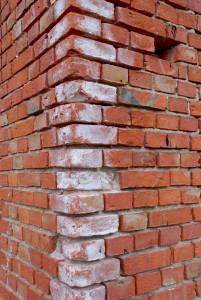Masonry fireplaces and chimneys are built to last. While they can stand up against the elements for decades at a time, they still need regular maintenance and occasional repairs in order to remain structurally sound and safe to use.
Oftentimes, homeowners fail to recognize the signs that their chimney is in need of professional attention. By recognizing the signs of damage or deterioration early, you may be able to avoid costly repairs by repairing small problems before they turn into much bigger ones. The following are five of the most common signs that it may be time to call a chimney sweep.
- Interior water damage: When water appears on the walls or ceilings, many homeowners are quick to blame their roofs. However, the roof may not always be the source of interior water damage. Leaky chimneys can cause damage to both the interior and exterior of your home; if the water damage is present near the chimney structure, there is a good chance you need to call a chimney sweep, not a roof
- Efflorescence: While it may be hard to say and even harder to spell, efflorescence may indicate an underlying issue with your chimney structure. Efflorescence refers to the white, powdery
 scum that is made up of minerals and salts and accumulates on the exterior of chimneys. While efflorescence can be easily removed by scrubbing or power washing the chimney, it will continue to return until the underlying issues causing the efflorescence are resolved.
scum that is made up of minerals and salts and accumulates on the exterior of chimneys. While efflorescence can be easily removed by scrubbing or power washing the chimney, it will continue to return until the underlying issues causing the efflorescence are resolved. - Mortar joint damage: Mortar is literally the glue that holds your chimney together. Because of this, it is important that the mortar joints are maintained; if they are damaged or allowed to deteriorate without repair, the structural stability of the chimney structure can be impacted. Mortar can deteriorate at a much faster rate than bricks; for example, while the bricks in your chimney may be able to last for 50 years, the mortar holding them together may only last for 25 (even less with water present) without needing to be repaired. Soft, cracked, or chipping mortar are all indications that the mortar joints have begun to deteriorate and need to be repaired
- Odor: One of the chimney symptoms that is most difficult to ignore is chimney odor. Chimney odors can be mild, only causing a slight smoky smell on particularly hot or humid days. Unfortunately, they can also be so bad that they make a home nearly unlivable. Whether your chimney smells needs a trained nose to be detected or can be barely concealed by air freshener, it is most likely the symptom of a more serious chimney issue. Creosote, water damage, animals, and mold can all cause chimney odors and should be addressed right away
- Spalling: Spalling refers to the process when bricks begin to chip, crack, or fall away from the chimney structure. Spalling brick not only creates a visual eyesore – it can also negatively impact the structural stability of your chimney. Spalling is often the result of long term water damage; it should be repaired as soon as possible as holes in the masonry only serve to allow more and more water in.
If your chimney or fireplace exhibits any of the signs above, call New Buck Chimney Services for an appointment. The longer you wait, the worse the problems will get – becoming even more expensive to fix. Don’t delay! Call us today at 318-674-2825.
